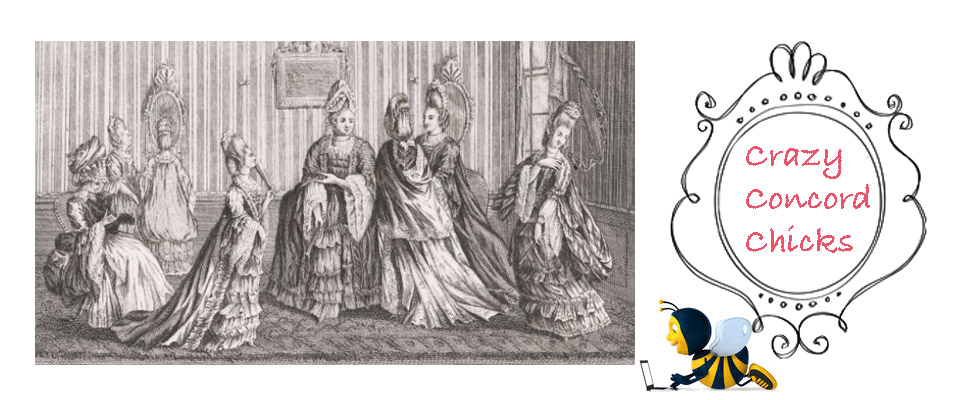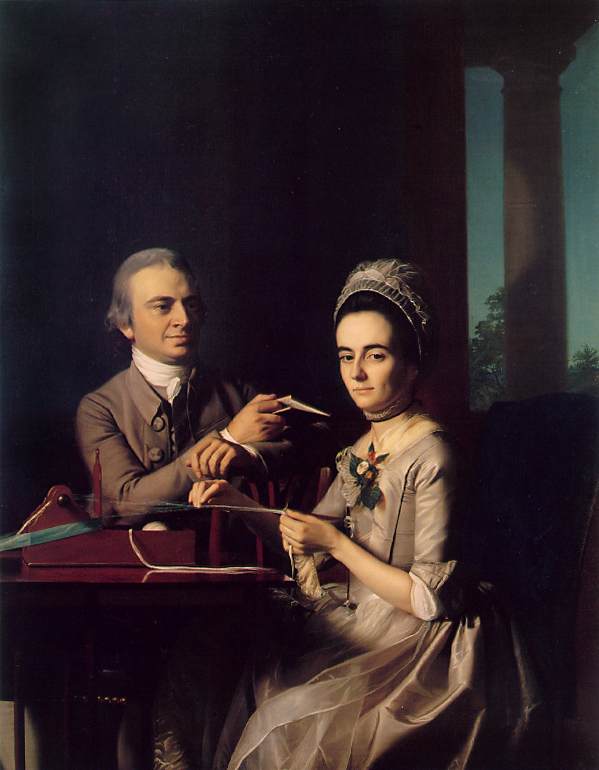The 21st century got in the way of the 18th century again and I left the blog hanging far longer than I meant to!
As I alluded to in my last post, I feel that I am a rather experienced living historian and dressmaker. A challenge for me is not in making a new gown, it is in making a gown that stands out historically. I believe reenactors commit a lot of reeanactorisms (things that are done so frequently in the living history community that they are accepted as a truth by the community as a whole.) This was a more common problem when I started in this hobby than it is now. Especially in New England, we have come a long way in a short time when it comes to dismissing inaccurate interpretations. Reenactorisms occur for many reasons: lack of time, money, knowledge (or most unavoidable) correct resources. There are so many elements necessary to create the proper look that are completely lost to us. Trims, notions, and fabrics top the list of things we can not get to properly re-create the look of 18th century material culture. We do the best we can but in a throw away society little quality materials are there for the taking. When found, these ingredients for the proper look come at a steep price. For those who are truly committed to "doing it right" the cost is worth it. I used to make the comparison that in the 18th century materials were expensive and labor was cheap (thus all the piecing and creative usage) and that in the 21st century, materials are cheap and labor expensive. I realize now that to "do it right" materials and labor are both expensive in the 21st century. Sad but true.
One of the benefits of doing a lot of research and looking a the real thing over and over again is that you can recognize and be on the lookout for a close approximation at a good price.
In regards to fabric choices, most reenactor women (Not distaff! Not ladies! Thankyouverymuch tangent over) have figured out that wool was the norm in New England and that printed cottons were popular too. We have done an excellent job at getting into gowns and showing a variety of colors and mostly appropriate patterns. My challenge is to replicate something that has not to my knowledge ever been replicated for living history purposes. It goes by many names which I will share later but is basically printed wool!
I first discovered such a thing in Barbara Johnson's Album of styles. An amazing resource if you have never seen it get it through inter library loan because it is very expensive. (Mine was a wedding gift...to myself.)
Barbara was an English woman who kept a diary of the gowns she had made for her from 1746 to 1823, she includes brief descriptions and actual fabric samples. Inside, she has 2 swatches of gown fabric which must have been unremarkable fabric at the time but which I have found myself quite taken with.
The red and light bluish fabric are both "printed stuff" as named by Barbara. I have chosen to reproduce an everyday gown made from the fabric you see on the bottom left of the page shown above. I am excited about this project because this fabric was a cheap way to make an everyday fabric "pop". It's the 18th century equivalent of a knock off purse, the designer look at Target prices. Even a woman with a hefty allowance such as Barbara Johnson who, as evidenced from her diary could afford silks and chinzes chose to buy the knock off. I believe, (and my research is showing me) that this stuff (get it?) was everywhere!In my next few posts I'll share some more evidence I've found.
In regards to what I said earlier about finding the right fabrics...check out these trusted sources:
For coat wool (I used KP for my cloak too)-http://www.historicaltextiles.com/
For documented cotton prints (check the dates/places on these!)- Duran Textiles
For silk, printed cotton and sometimes linen try our friends- Burnley & Trowbridge
Oh there are more too! If you wonder about a fabric choice ask a Crazy Concord Chick (or Mr. Mann) most of us have looked at lots!
As I alluded to in my last post, I feel that I am a rather experienced living historian and dressmaker. A challenge for me is not in making a new gown, it is in making a gown that stands out historically. I believe reenactors commit a lot of reeanactorisms (things that are done so frequently in the living history community that they are accepted as a truth by the community as a whole.) This was a more common problem when I started in this hobby than it is now. Especially in New England, we have come a long way in a short time when it comes to dismissing inaccurate interpretations. Reenactorisms occur for many reasons: lack of time, money, knowledge (or most unavoidable) correct resources. There are so many elements necessary to create the proper look that are completely lost to us. Trims, notions, and fabrics top the list of things we can not get to properly re-create the look of 18th century material culture. We do the best we can but in a throw away society little quality materials are there for the taking. When found, these ingredients for the proper look come at a steep price. For those who are truly committed to "doing it right" the cost is worth it. I used to make the comparison that in the 18th century materials were expensive and labor was cheap (thus all the piecing and creative usage) and that in the 21st century, materials are cheap and labor expensive. I realize now that to "do it right" materials and labor are both expensive in the 21st century. Sad but true.
One of the benefits of doing a lot of research and looking a the real thing over and over again is that you can recognize and be on the lookout for a close approximation at a good price.
In regards to fabric choices, most reenactor women (Not distaff! Not ladies! Thankyouverymuch tangent over) have figured out that wool was the norm in New England and that printed cottons were popular too. We have done an excellent job at getting into gowns and showing a variety of colors and mostly appropriate patterns. My challenge is to replicate something that has not to my knowledge ever been replicated for living history purposes. It goes by many names which I will share later but is basically printed wool!
I first discovered such a thing in Barbara Johnson's Album of styles. An amazing resource if you have never seen it get it through inter library loan because it is very expensive. (Mine was a wedding gift...to myself.)
Barbara was an English woman who kept a diary of the gowns she had made for her from 1746 to 1823, she includes brief descriptions and actual fabric samples. Inside, she has 2 swatches of gown fabric which must have been unremarkable fabric at the time but which I have found myself quite taken with.
The red and light bluish fabric are both "printed stuff" as named by Barbara. I have chosen to reproduce an everyday gown made from the fabric you see on the bottom left of the page shown above. I am excited about this project because this fabric was a cheap way to make an everyday fabric "pop". It's the 18th century equivalent of a knock off purse, the designer look at Target prices. Even a woman with a hefty allowance such as Barbara Johnson who, as evidenced from her diary could afford silks and chinzes chose to buy the knock off. I believe, (and my research is showing me) that this stuff (get it?) was everywhere!In my next few posts I'll share some more evidence I've found.
In regards to what I said earlier about finding the right fabrics...check out these trusted sources:
For coat wool (I used KP for my cloak too)-http://www.historicaltextiles.com/
For documented cotton prints (check the dates/places on these!)- Duran Textiles
For silk, printed cotton and sometimes linen try our friends- Burnley & Trowbridge
Oh there are more too! If you wonder about a fabric choice ask a Crazy Concord Chick (or Mr. Mann) most of us have looked at lots!
--Mrs. Revere





























